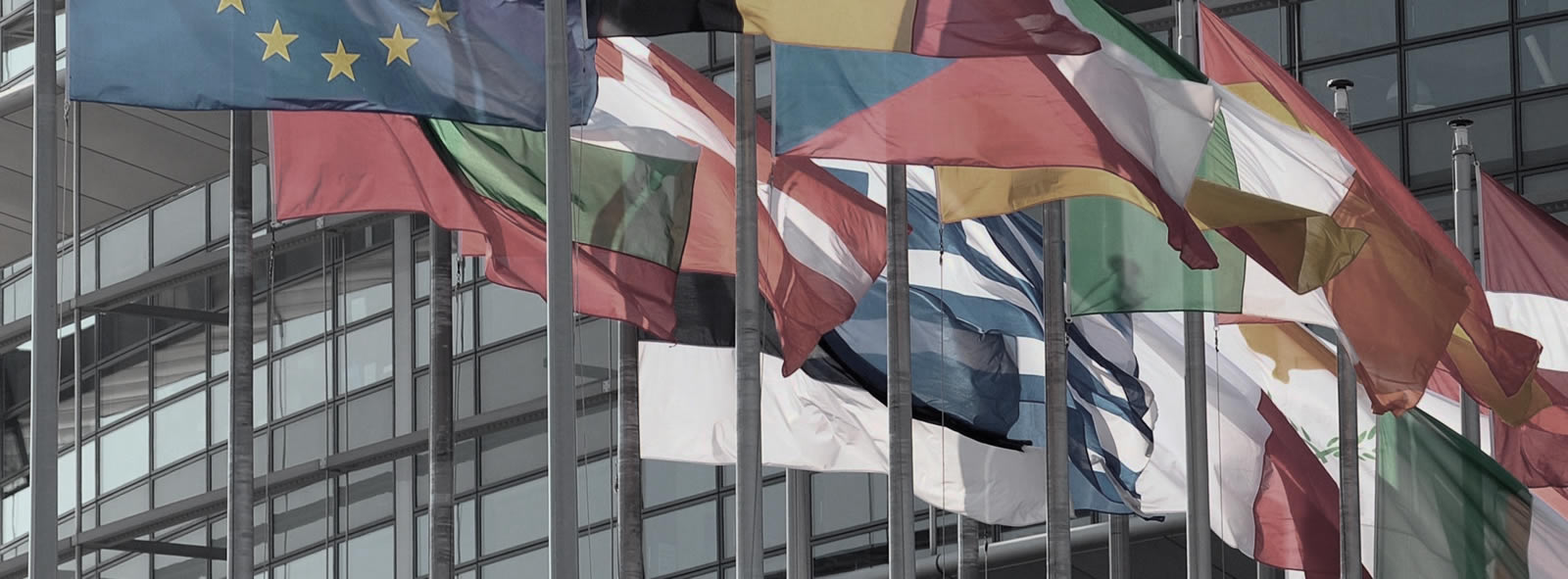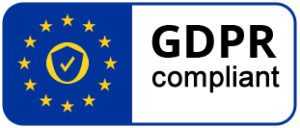03 Sep 2020 Implementation of the eIDAS nodes: State of play
Since the adoption of the eIDAS Regulation in 2014, 15 Member States have notified at least one electronic identification (eID) scheme. Such a notification entails an obligation of mutual recognition by other Member States within one year. This means that the notified eID scheme can be used in Member States where an eID means is required to access a public service.
The concrete implementation of mutual recognition is done through the eIDAS nodes. Each Member State sets up a node, i.e. an interface which communicates with other nodes to request or provide cross-border identification and authentication. A software (eIDAS-Node software) has been developed under the Connecting Europe Facility (CEF) programme and is being re-used by most of the Member States for the roll-out of their nodes.
The objective of this short study is to give an overview of the current state of play of interconnection of the eIDAS nodes across Europe. More precisely, the study aims to provide an answer to the following question: as a citizen from Member State A, in which Member States can I use my eID? It also provides additional comments on the roll-out of both national eID schemes and eIDAS nodes.
The information compiled in this study was gathered through exchanges with national contact points. It is based on the answers that could be collected, hence explaining missing information for some Member States.
Acknowledgement: Eurosmart would like to give a special thanks the national contact points who provided the information.
Disclaimer: The study was realised from May to August 2020, the situation might have evolved during this period of time. If you notice an obsolete or inaccurate data, please do not hesitate to report it to us (camille.dornier@eurosmart.com).
| Country | Statute of the node | Receiving eIDs from | Sending eIDs to | Addtional comments |
|---|---|---|---|---|
| Austria | In Prod. | Estonia, Germany, Italy, Spain. In progress: Belgium, Croatia, Luxembourg, Portugal. | No notification so far. | |
| Belgium | In Prod. | Croatia, Estonia, Germany, Italy, Luxembourg, Lithuania, Slovakia, Spain. | No view on what the other countries have implemented. | |
| Bulgaria | In Prod. | None | No notification so far. | |
| Croatia | In Prod. | Belgium, Germany, Malta, Netherlands, Slovenia, Sweden, Luxembourg. In progress: Austria, Cyprus, the Czech Republic, Estonia, Spain, Lithuania, Latvia, Poland, Portugal, the UK, Bulgaria, Denmark, Ireland, Italy and Slovakia. | Belgium, Germany, Malta, Netherlands, Slovenia, Sweden, Luxembourg and Norway. | |
| Cyprus | Under develop. | Testing mode with 6 other Member States. | No notification so far. | Production of the node expected for the summer. Cyprus has an eID scheme with LoA low. Cyprus is in the process of developing a national scheme with LoA high. The eID scheme would be put in place in Q1-Q2 2021. Cyprus will subsequently start the notification process. |
| Czech Republic | In Prod. | Germany. In the process of integrating other countries according to notified eID schemes. | None. | The Czech eIDAS node is running, but -with regard to the notified eID cards, Czech Republic was doing some adjustments of their eID system at the time of the study. The time needed to adjust this eID system was estimated to several weeks. |
| Denmark | In Prod. | – | – | |
| Estonia | In Prod. | Belgium, Croatia, Italy, Germany, Latvia, Luxembourg, Portugal, Spain. | Austria, Belgium, Croatia, Denmark, Finland, Greece, Italy, Lithuania, Luxembourg, Malta, Netherlands, Norway, Poland, Portugal, Slovakia, Slovenia, Sweden, UK | |
| Finland | Under develop. | Estonia, Italy, Germany. | No notification so far. | |
| France | N/A | None | None. | France will pre-notify its eID schemes by the end of 2020 or early 2021. The French eIDAS node is being audited until October 2020. A testing phase will follow but remains to be planned. |
| Germany | In Prod. | No overview because of the decentralised approach. | Austria, Belgium, Czech Republic, Denmark, Estonia, Finland, Greece, Italy, Latvia, Lithuania, Luxembourg, Malta, the Netherlands, Slovakia, Slovenia, Spain, Sweden, the UK. | The German eIDAS Connectors (receiving nodes) are operated by other parties that are not under German federal administration’s direct control. The German team does not know the exact number of eIDAS Connectors in Germany, and, hence could not provide further details on received eIDs. Services that are connected to the eIDAS network, via their eIDAS Connector, are to be accessible by all notified eID means that fall under the mutual recognition obligation. However, the implementation status is not always satisfactory. |
| Greece | Under develop. | – | – | |
| Hungary | Under develop. | – | – | |
| Ireland | Under develop. | – | – | |
| Italy | In Prod. | Belgium, Croatia, Estonia, Germany, Luxembourg, Portugal, Slovakia, Spain, the UK. In progress: Czech Republic, Latvia, Netherlands. | Austria, Belgium, Croatia, Denmark, Estonia, Finland, Greece, Latvia, Lithuania, Luxembourg, Malta, the Netherlands, Portugal, Slovakia, Slovenia, Spain, Sweden, UK | |
| Latvia | Under develop. | Germany, Italy, Estonia, Spain, Croatia, Luxembourg, Belgium, Portugal. In the process of integrating other countries according to the notified eID schemes. | Croatia, Spain, Portugal, Italy, Lithuania, Estonia, Luxembourg. | |
| Lithuania | In Prod. | Germany, Greece, Italy, Latvia, Luxembourg, Portugal, Spain, Sweden. Test with over 18 countries. | None. | eID notified on 21 August 2020. Discussions started with Baltic countries for these countries to accept the Lithuanian eID as soon as possible. Not all Lithuanian service providers accept data of foreign people. This problem is currently being fixed. |
| Luxembourg | In Prod. | Belgium, Croatia, Estonia, Germany, Italy, Spain. | Austria, Belgium, Croatia, Denmark, Estonia, Italy, Latvia, Malta, the Netherlands, Slovakia, Slovenia, Spain, Sweden, the UK. | |
| Malta | In Prod. | Belgium, Croatia, Estonia, Germany, Italy, Luxembourg, Portugal, Spain, the UK. | No notification so far. | A date for notification remains to be determined. |
| Netherlands | In Prod. | Belgium, Croatia, Estonia, Germany, Italy, Luxembourg, Spain. | None so far. | DigiD was notified on 21 August 2020. Using DigiD in other Member States should be possible from August 2021. |
| Poland | In Prod. | – | – | |
| Portugal | In Prod. | Belgium, Estonia, Italy, Latvia, Lithuania, Luxembourg, Slovakia, Slovenia, Spain. | Belgium, Estonia, Italy, Latvia, Lithuania, Luxembourg, Slovakia, Slovenia, Spain. | |
| Romania | Under develop. | None | None | |
| Slovakia | In Prod. | Belgium, Croatia, Estonia, Germany, Italy, Luxembourg, Portugal, Spain, t In progress: Czech Republic, Denmark, the Netherlands, Poland, the UK. | Belgium, Czech Republic, Italy, Spain. | |
| Slovenia | In Prod. | – | – | |
| Spain | In Prod. | Belgium, Croatia, Estonia, Germany, Italy, Latvia, Luxembourg, Portugal, Slovakia. | Austria, Belgium, Croatia, Denmark, Estonia, Greece, Italy, Latvia, Lithuania, Luxembourg, Malta, the Netherlands, Portugal, Slovakia, Sweden, United Kingdom. | |
| Sweden | In Prod. | Belgium, Croatia, Estonia, Germany, Italy, Luxembourg, Spain. | No notification so far. | |
| United Kingdom | In Prod. | – | – |
Obstacles to smooth implementation of eIDAS: a national perspective
A few issues were identified by the national contact points as obstacles to a smooth implementation of eIDAS. Such obstacles are both legislative, e.g. missing elements in the legislation, and technical.
Identity matching
Identity matching was mentioned a few times as a challenge faced by national administrations. It seems to be the biggest problem when it comes to the implementation of eIDAS. Some Member States do not have persistent identifiers – or such persistent identifiers are provided as an optional attribute, which makes it difficult to match the identity data stored in a particular public sector body with the information on the identified/authenticated person received through the process of electronic identification. This renders recognition of foreign identities harder.
Implementing Regulation 2015/1501 establishes that the minimum data set for a natural or legal person shall contain a unique identifier (beside name, surname and birthdate for a natural person, and beside the legal name for a legal person). According to the current technical specifications, the unique identifier is composed as follows:
1. The first part is the Nationality Code of the identifier
- This is one of the ISO 3166-1 alpha-2 codes, followed by a slash (“/“))
2. The second part is the Nationality Code of the destination country or international organization
- This is one of the ISO 3166-1 alpha-2 codes, followed by a slash (“/“)
3. The third part a combination of readable characters
- This uniquely identifies the identity asserted in the country of origin but does not necessarily reveal any discernible correspondence with the subject’s actual identifier (for example, username, fiscal number etc). Example: ES/AT/02635542Y (Spanish eIDNumber for an Austrian SP)
Some national contact points underline that the current legislation is not enough to provide a reliable matching between the physical and digital identity of a person. Clearer technical specifications and more stable identifiers were mentioned as possible solutions to this problem.
National contact points also raised the issue of the lack of relevant attributes for several services. The list of mandatory attributes laid down by Implementing Regulation 2015/1501 is limited, e.g. it does not include the fiscal residence, which hampers the use of eIDAS for some purposes (e.g. Know-Your Customer).
Technical problems
First, different types of implementations (middleware vs proxy) of eIDAS nodes render interoperability and governance more difficult.
Secondly, the trust establishment model was cited as a problematic issue. The configuration of the trust information, metadata and certificates, between the eIDAS nodes must be done manually. This can result in technical problems when interconnecting the eIDAS nodes. At least one national contact point advocated for an automated trust establishment mechanism, such as trust lists for qualified certificates.
Finally, another point raised was the need to upgrade the version of the eIDAS node at much faster pace than expected. New versions of the eIDAS node are frequently released, and there is no information on the release of a future finalised version which could be used for a longer period of time.
Difficult cross-border communication
Cross-border communication was another issue mentioned as an obstacle to smooth implementation. Contact with other Member States to make an eID accepted is not always seamless.
In addition, there is no list of public sector services that can be used through eIDAS authentication for each Member State.
Eurosmart_study_eIDAS_nodes_interconnection_final


